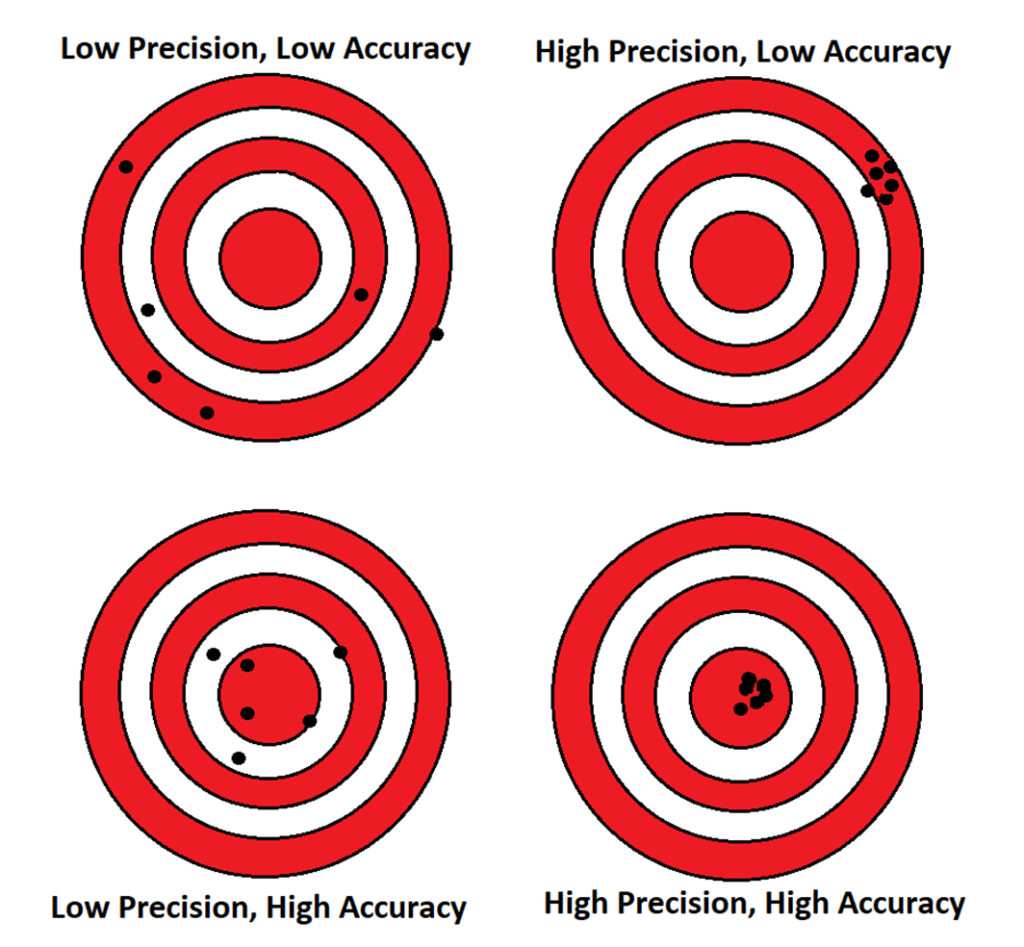Positioner Accuracy, Precision, and Resolution
Positioners are a crucial part of an imaging system; the ability to aim the imager effectively and efficiently can be the difference between the finding the target on the first try or missing the target and having to hunt for it – an experience which can lead to mission failure in certain circumstances and is at least very frustrating.
Manufacturers often quote specifications about things such as accuracy, precision, and resolution to describe how well their positioner can aim at a target. Many people use these terms interchangeably, but they are not the same. What do these terms mean and how are they relevant to succeeding in your mission? First, we will define the terms, then we’ll provide an analogy that’s easy to understand, and tie it back to the question about positioning systems.
Accuracy: Degree of closeness of the measurement to the target value.
Precision: Degree of closeness of the measurements with each other.
Resolution: Smallest increment of measurement that can be made.
Resolution is the easiest of these terms to understand. Resolution is the smallest measurement that can be made; most people are used to this idea without thinking too much about it – for example, using an analog wristwatch with a second hand that sweeps around the dial, you can resolve units of 1 second, if each second is marked on the dial (some might even argue that you can resolve down to 0.5 seconds, as you can roughly tell when the second hand is between numbers). However, nobody would use such a watch to measure times down to a hundredth of a second; you simply can’t measure that small of a unit of time with that instrument. So, resolution is simply the smallest measurement that you can make with the device you are using.
How does this relate to positioners? Positioners use devices called encoders (sometimes called resolvers) to measure angular motion. Many manufacturers will cheat and declare their encoder resolution to be their precision (or worse, their accuracy). However, that overlooks a big factor: Where in the drive train is the measurement of the encoder taking place? Measurement can occur on the output shaft of the motor, on a separate belt/pulley system away from the motor, or directly coupled to the output side of the positioner. The point is, unless you know exactly where the encoder is mounted, and what other elements in the drive train may contribute to error in the system, all the encoder resolution stands for is the encoder resolution, not system resolution. Aside from the mechanics of the system (i.e.., where the encoder is mounted and what else contributes to its error), another factor in system resolution is the control system. While it’s common for many manufacturers to use encoder resolution interchangeably with precision, it is not true. A better way to think of it is that the encoder resolution is theoretically the very best precision that the system can achieve but understand that other real-life factors will almost certainly cause it to be less.
To illustrate the meaning of accuracy and precision, a classic example is found in the sport of target shooting, Figure 1. Looking at examples of the hit distribution on the targets illustrate the meaning of these terms. From this picture, we can see that precision means the measurements are closely grouped, while accuracy means that the grouping (whether good or bad) is centered around the ideal target point. This means you can have either, neither, or both precision and accuracy at the same time, but having one does not imply anything about the other.

How does this apply to a positioner (aiming a camera)? Just as with the target shooting example, you’ll get the best performance with both precision and accuracy. In terms of a positioner, precision means the smallest possible repeatable move; this is crucial when trying to center a target in the field of view. Accuracy, in the context of a positioner/imager system, means the ability to correctly slew to a target position. This could be the case, for example, when preset positions are used (to look at a particular road junction, or gate, or perhaps a more distant target like a distant mountain pass). This is especially important with long range systems, where small errors in the pointing angle can cause the imager to view far off target. It’s also important with systems that use tracking systems (such as optical or radar tracking), as the ability to make very fine (precise) and accurate movements can make the tracking look smooth and seamless or look very poor.
In summary, accuracy and precision are not interchangeable terms. Accuracy is a measurement of how well a group of measurements are centered around an ideal target, while precision is a measure of how close or spread out that group of measurements is. With respect to positioners, customers should question what numbers are reported, and be aware that encoder resolution, which is often reported as either (or both) the accuracy or the resolution, is only one piece of the system. It represents a theoretical upper limit on precision (which likely won’t be fully achieved by the complete system, if properly measured), and it represents nothing about accuracy.
